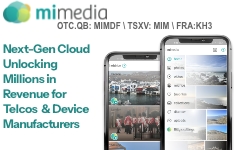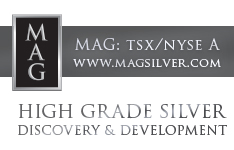The federal debt relative to the U.S. economy has reached heights unseen since World War II, according to a report by Wendy Edelberg, Ben Harris, and Louise Sheiner for Brookings in February.
Without adjustments to tax and spending policies, it is expected to rise continuously. The existing tax structure is insufficient to meet the escalating costs associated with retirement and health benefits for an aging demographic, according to the report. To date, the U.S. has managed to borrow trillions annually. However, analysts caution that the mounting national debt is bound to precipitate a financial crisis.
In an interview with Lisa Abramowicz at the Bloomberg Global Credit Forum in Los Angeles that was posted June 11 on YouTube, DoubleLine Group Chief Executive Officer Jeffrey Gundlach said one of the "most-bankable" long-term themes to look at is investing in India, now the world's most populous country with 1.46 billion people in 2025. As much as 40% of that population is under 25, giving the country a young demographic profile, as well.
"Because India has a similar profile today to where China was 35 years ago, when they had tremendous population, labor force, visibility of labor force growth, tremendous problems, a gummed-up legal system, (and) corruption all over the place," Gundlach said. "But those are things that can be fixed. And you see, China went from 1/12th of the U. S. GDP to 70-80% of U. S. GDP."
He continued, "India has the same demographic outlook as China did then," and has the benefit of being "very technological."
A Trade Agreement Enhancing Exports?
A substantial trade agreement between New Delhi and Washington could significantly enhance India's exports and manufacturing sector, leading to prolonged economic growth, as per Bloomberg Economics, reported Ruchi Bhatia for Bloomberg on July 5.
Such a deal could potentially double India's exports of goods to the U.S. — its largest international market, which constitutes 19.3% of its total exports — over the next decade, and boost its gross domestic product by 0.6%, according to a report by economists Abhishek Gupta and Eleonora Mavroeidi, Bhatia reported.
Including services, total exports to the U.S. are projected to increase by 64%, the report added.
The majority of these export gains are expected to come from textiles and light manufacturing goods, such as furniture, toys, and other consumer products. The economists noted that the trade agreement would represent a significant turning point for India's domestic manufacturing sector.
Nikita Yadav reported for the BBC on July 17 that "Washington and Delhi are 'very close' to finalizing a trade deal" as high-level talks between the sides continue.
"We're very close to a deal with India where they open it [the market] up," Trump told reporters at the White House on Wednesday, Yadav reported.
With the Trump administration imposing substantial tariffs on China and Vietnam, a trade deal that sets tariffs at 10% for India could position the country as an attractive option for businesses looking to relocate or diversify their supply chains, the economists explained.
Should the trade deal not materialize and India faces higher reciprocal tariffs of 26%, the country could lose more than a third of its direct exports to the U.S., and its GDP could suffer a 0.7% decline, according to the report.
India was one of the first countries to start trade negotiations with the U.S. this year, with Prime Minister Narendra Modi making significant concessions to satisfy the White House. However, in recent weeks, both parties have adopted firmer positions on sectors such as agriculture.
India Starting to Look Safer, Researcher Says
According to Investing.com, Indian stocks closed higher on July 16, with gains in the Real Estate, Technology, and Public Sector Undertakings sectors driving the shares upward. At the close on the NSE, the Nifty 50 was up by 0.06%, while the BSE Sensex 30 index increased by 0.08%.
India's stock market is poised to reach new heights by the end of 2025 and is expected to continue its ascent into the following year, according to a Reuters survey of equity analysts. Despite some concerns about high valuations and the potential for a correction in the next three months, the outlook remains optimistic. After a period of selling, foreign investors became net purchasers in April for the first time in four months. Meanwhile, the blue-chip Nifty 50 index has surged nearly 15% from a 10-month low in early April, although it remains below its all-time peak of 26,277.35 reached in late September, Vivek Mishra reported for Reuters.
The BSE Sensex is projected to rise to 86,100 by the end of 2025, reaching 89,000 by mid-2026 and 95,000 by the end of 2026, according to the poll.
"India is starting to look like a safer bet since there aren't many growth alternatives," Yogesh Kalinge, associate director of research at A.K. Capital Services, told Reuters. "Trump's policy is not leading to the usual outflows toward the U.S. safe haven and is in fact making emerging markets look better . . . (But) if you look at valuations, they do look stretched."
With an average price-to-earnings ratio of 23.52, the Indian stock market is among the most expensive globally, trailing only the U.S. at 25.41 and significantly above China's 12.00. Of the analysts who responded to an additional question, 15 out of 28 indicated that a correction — typically defined as a decline of 10% or more — was very likely or likely. The remaining 13 viewed it as unlikely or very unlikely.
"I expect a correction in the short term . . . because of the inability of large caps to grow as expected. Large-cap index revenue growth is below India's nominal economic growth, which is worrisome," stated Sreeram Ramdas, vice president at Green Portfolio PMS.
A substantial majority, 23 out of 29 analysts, anticipate that corporate earnings growth in 2025 will be marginally higher, with four predicting significantly higher growth, the Reuters piece reported. Six analysts expect earnings to be marginally or significantly lower.
Profit growth for Nifty 50 companies remained subdued in the December quarter, with most companies missing estimates. However, this was an improvement after three notably weaker quarters.
"Earnings growth moderated due to a slower recovery in private sector investment. While some of these pressures have started to ease, the recovery has been insufficient to offset the overall slowdown in corporate performance," explained Ajit Mishra, senior vice president of research at Religare Broking.
Seeking Alpha ranked Indian stocks according to its "quantamental" analysis, which grades stocks based on collective value, growth, profitability, earnings per share revisions, and price momentum metrics.
The site said William Blair & Co. analysts attribute India's superior performance to robust economic fundamentals, advantageous demographics, and an expanding middle class. In their Emerging Markets 2025 report, the analysts noted, "The current valuation premium...should prompt investors to adopt a cautious, quality-focused approach in the present climate."
They further added, "As India progresses along its growth path, it has the capacity to mirror China’s swift economic rise that began in the early 1990s, though potentially with a more balanced and sustainable approach to growth."
Here are three stocks listed by the site as offering exposure to markets in this this emerging trade powerhouse.
MakeMyTrip Ltd.
MakeMyTrip Ltd. (MMYT:NASDAQ), based in Gurugram, scored 3.18 out of 5 on Sthat scale. It manages prominent online travel brands such as MakeMyTrip, Goibibo, and redBus. Through the company's main websites, www.makemytrip.com, www.goibibo.com, www.redbus.in, and mobile applications, travelers can explore, plan, and book a broad array of travel services and products both within India and internationally, the company said on its site.
Offerings include air ticketing, bookings for hotels and alternative accommodations, vacation planning and packages, bus and rail ticketing, car rentals, and other travel necessities like third-party travel insurance, foreign exchange services, and visa processing.
MakeMyTrip said it offers customers comprehensive access to all major domestic full-service and budget airlines in India, as well as major international airlines flying to and from India. Additionally, the company said it provides a vast selection of domestic lodging options in India and numerous accommodation choices abroad, connections to Indian Railways, and all principal bus operators in India.
According to Seeking Alpha, in the last 90 days, seven Wall Street analysts have rated the stock a Strong Buy and three have rated it a Buy.
MakeMyTrip closed the Tuesday trading session at US$93.01, marking a +2.25% increase from the previous day's close, according to a report by Zacks Equity Research published by Yahoo! Finance. This performance outpaced the S&P 500, which saw a decline of 0.4% on the same day. Conversely, the Dow fell by 0.98%, while the tech-heavy Nasdaq saw a modest rise of 0.18%.
Over the past month, shares of the online travel company have declined by 9.83%, underperforming the Computer and Technology sector, which gained 6.34%, and the S&P 500, which rose by 4.97%.
Investors are keenly anticipating MakeMyTrip's performance in its forthcoming earnings announcement, the Zacks report noted. The company is scheduled to release its earnings report on July 22, 2025. It is expected to post earnings per share (EPS) of US$0.45, reflecting a 15.38% increase from the same quarter last year. Additionally, the latest consensus estimate projects the company's revenue to hit US$277.12 million, up 8.88% from the same quarter of the previous year.
MakeMyTrip recently launched a significant primary offering that included 14 million shares, with an additional 2.1 million shares available through a greenshoe option; and a 0% convertible senior note valued at US$1.25 billion due in 2030, with a greenshoe option of US$187.5 million, Manik Taneja of Axis Capital wrote in an updated research note on June 17. The analyst set a rating of ADD with a target price of US$120 per share.
This move aims to purchase a substantial portion of Class B shares from its majority shareholder, Trip.com, reducing their stake from approximately 45% to around 20% following the transaction. Our preliminary estimates (see Exhibit 1 below) indicate that the earnings impact should be minimal, as the change in the number of shares is relatively slight compared to our forecasts. The recent market correction presents an opportunity to invest in a consistent performer, especially considering the positive demand trends in the Indian Travel tech sector.
According to a July 14 research note by Ambit Institutional Equities Analyst Ashwin Mehta, some keys to look for from the company include "growth outlook, especially recovery in domestic air ticketing, outbound air and hotel momentum, and any impact of macro uncertainties (that) led pullback on travel spends.
Mehta rated the stock a Buy with a US$117 per share target price.
Refinitiv notes that about 3% of the company is owned by insiders, about 15% by strategic corporate entities, and 75% by institutions. The rest is retail.
Top shareholders include Trip.com Group Ltd. with 11.99%, GIC Private Ltd. with 7.64%, Baillie Gifford & Co. with 5.74%, Fidelity Management & Research Co. with 4.35%, and Travogue Electronic Travel Private Ltd. with 2.62%.
Its market cap is US$8.85 billion 95.15 million shares outstanding. It trades in a 52-week range of US$76.95 and $123.
Infosys Ltd.
Infosys Ltd. (INFY:NYSE), headquartered in Bengaluru, provides next-generation digital services and consulting. With a workforce of over 320,000, the company said it strives to enhance human potential and forge new opportunities for individuals, businesses, and communities worldwide.
Infosys, which scored 3.09 on Seeking Alpha's scale, said it assists clients across more than 59 countries on their journey through digital transformation, powered by cloud and artificial intelligence (AI) technologies.
On Wednesday, the company unveiled the Infosys Enterprise Innovation Lab for SAP Solutions at its Düsseldorf, Germany location. This initiative, emerging from a collaboration between Infosys and SAP, is crafted to empower enterprises to delve into the expansive potential of AI and data, develop bespoke solutions for their unique business challenges, and expedite the adoption of advanced Infosys and SAP technologies.
The lab is designed to facilitate the creation of solutions that boost financial performance, enhance operational efficiency, improve risk management, and support decision-making through real-time data insights, while also elevating compliance and security standards. Innovations developed in the Düsseldorf lab will be accessible globally through Infosys’ network of over 12 Living Labs.
"Enterprises looking to adopt new SAP solutions will find that the Infosys Enterprise Innovation Lab for SAP Solutions significantly smoothens their transformation journey," said Infosys Executive Vice President and Chief Delivery Officer Dines Rao. "Located in our Düsseldorf office, this collaborative space is designed to develop customized solutions. Leveraging Infosys Topaz and Infosys Cobalt, we aim to enable businesses to fully utilize cloud, data, and AI technologies, achieving substantial business benefits such as improved efficiency, better decision-making, cost reductions, and preparedness for the future."
A June 11 research note by Daniel Alvarez and Scott White for Yaru Investments titled "India's Artificial Intelligence Supercycle" noted that Infosys was one of India's "IT leaders."
Infosys is renowned for its comprehensive approach to integrating enterprise AI. The Topaz platform consolidates generative AI, machine learning, and automation into industry-specific modules applicable to sectors like banking, manufacturing, and healthcare. Through significant partnerships with major platforms such as Microsoft Azure and AWS, Infosys collaborates to create customized LLM-based solutions for its global clientele.
"Infosys stands out for its end-to-end approach to enterprise AI integration," the analysts noted. "Its Topaz platform brings together generative AI, machine learning, and automation into deployable modules tailored for industries such as banking, manufacturing, and healthcare. With major partnerships (including with Microsoft Azure and AWS), Infosys co-develops customized LLM-based solutions for global clients."
The company's commitment to reskilling its workforce, particularly in areas like prompt engineering and AI ethics, establishes Infosys as a preferred partner for organizations looking to implement GenAI on a large scale, they wrote. Crucially, Infosys has successfully transitioned AI from experimental phases to a source of revenue generation, with discussions with clients increasingly focused on the productivity improvements and cost efficiencies driven by AI.
According to Refinitiv, about 14% of the company is owned by institutions, and the rest is retail.
Top shareholders include First Trust Advisors LP with 0.97%, Robeco Institutional Asset Management with 0.66%, Acadian Asset Management LLC with 0.64%, State Street Global Advisors (US) with 0.41%, and Goldman Sachs Asset Management LP with 0.4%
Its market cap is US$77.52 billion with 4.14 billion shares outstanding. It trades in a 52-week range of US$15.82 and US$23.63.
ICICI Bank Ltd.
ICICI Bank Ltd. (IBN:NYSE) scored the highest on Seeking Alpha's rankings with 4.86 out of 5 points. The company continues to stand out as a structural compounder, boasting an industry-leading return profile and consistently outperforming its major peers in terms of growth, according to a research note by Axis Capital's Jayant Kharote on June 18.
Its robust foothold in the mortgage and unsecured segments, along with an expanding SME/BB franchise, is expected to propel credit growth recovery to around 15%, the analyst noted. While the impact on Net Interest Margin (NIM) might be slightly more pronounced compared to its peers, a recovery is anticipated by Q4FY26/Q1FY27E.
The bank's dominant retail franchise provides an additional lever for fee growth, helping to mitigate near-term pressures on earnings per share (EPS). Over the medium term, ICICI Bank is poised to maintain its leadership in growth and return ratios among the large private banks.
However, its rich valuation suggests limited upside potential, leading the firm to maintain its ADD rating on the stock.
Should there be a delay in systemic recovery, ICICI Bank is better positioned compared to its peers, offering a more secure investment option in the context of a credit growth revival, Kharote wrote.
"ICICI Bank continues to exhibit best-in-class asset quality metrics," the analyst wrote.
On April 19, the company released a performance review for the quarter ending March 31.
It noted that profit before tax, excluding treasury activities, increased by 13.2% year-on-year to 16,534 crore (US$1.9 billion), and core operating profit rose by 13.7% year-on-year to 17,425 crore (US$2.0 billion). Profit after tax saw an 18% year-on-year increase to 12,630 crore (US$1.5 billion) in that quarter.
For the fiscal year ending March 31, profit before tax, excluding treasury, grew by 11.4% year-on-year to 60,713 crore (US$7.1 billion), and core operating profit for FY2025 increased by 12.5% year-on-year to 65,396 crore (US$7.6 billion), ICICI said in a release.
"The Board has recommended a dividend of 11 rupees per share for FY2025," the company said. "The declaration and payment of dividend is subject to requisite approvals."
Refinitiv noted that less than 1% of the company is owned by strategic corporate entities and about 19% by institutions. The rest is retail.
Top shareholders include GQG Partners LLC with 2.17%, WCM Investment Management with 1.5%, Morgan Stanley Investment Management with 0.99%, Temasek Holdings Pte. Ltd. with 0.76%, and Capital International Investors with 0.56%.
Its market cap is US$117.85 billion with 3.6 billion shares outstanding. It trades in a 52-week range of US$27.26 and US$34.50.
| Want to be the first to know about interesting Special Situations and Technology investment ideas? Sign up to receive the FREE Streetwise Reports' newsletter. | Subscribe |
Important Disclosures:
- Steve Sobek wrote this article for Streetwise Reports LLC and provides services to Streetwise Reports as an employee.
- This article does not constitute investment advice and is not a solicitation for any investment. Streetwise Reports does not render general or specific investment advice and the information on Streetwise Reports should not be considered a recommendation to buy or sell any security. Each reader is encouraged to consult with his or her personal financial adviser and perform their own comprehensive investment research. By opening this page, each reader accepts and agrees to Streetwise Reports' terms of use and full legal disclaimer. Streetwise Reports does not endorse or recommend the business, products, services or securities of any company.
For additional disclosures, please click here.







































